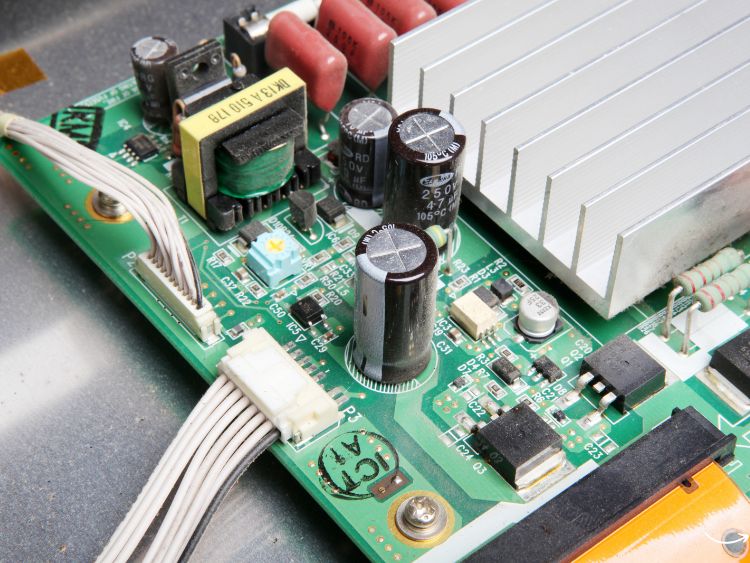Ever wondered what makes your computer tick? What’s under the hood of that sleek laptop or powerful desktop? Well, it’s all about the hardware. Computer hardware refers to the physical components that make up a computer system. These tangible parts, each with a specific function, come together to perform all the complex tasks we often take for granted. From the central processing unit (CPU) to the random access memory (RAM), understanding computer hardware is crucial for anyone looking to get the most out of their tech.
In this article, we’ll dive deep into the world of computer hardware, exploring its various components, their functions, and why they’re so essential. Whether you’re a tech newbie or a seasoned pro, there’s always something new to learn about the hardware that powers our digital lives.
What is Computer Hardware?
Computer hardware refers to the physical parts of a computer system, encompassing everything from the motherboard to the peripherals like keyboards and monitors. Unlike software, which is intangible and exists as code, hardware consists of the physical devices and components you can touch and see.
Key Components of Computer Hardware
- Central Processing Unit (CPU): Often referred to as the brain of the computer, the CPU performs all the instructions from software and hardware.
- Motherboard: This is the main circuit board that houses the CPU, RAM, and other critical components.
- Random Access Memory (RAM): A form of volatile memory that temporarily stores data for quick access by the CPU.
- Storage Devices: These include hard drives (HDD) and solid-state drives (SSD), where data is permanently stored.
- Power Supply Unit (PSU): Converts electricity from an outlet into usable power for the other components.
- Graphics Processing Unit (GPU): Handles rendering images, videos, and animations for display.
Exploring the Core Components
Central Processing Unit (CPU)
The CPU is the heart of any computer system. It interprets and executes most of the commands from the computer’s hardware and software. Modern CPUs are incredibly powerful, capable of performing billions of calculations per second. They’re essential for everything from basic tasks like browsing the web to more complex activities like gaming or video editing.
Motherboard
The motherboard is the backbone of a computer, connecting all the components together. It’s a large printed circuit board (PCB) that allows communication between the CPU, RAM, and all other hardware. It’s essential for the overall functionality of the computer, providing slots for expansion cards and connections for peripherals.
Random Access Memory (RAM)
RAM is the computer’s short-term memory. It temporarily stores data that the CPU needs quick access to. More RAM means your computer can handle more tasks simultaneously, improving overall performance. It’s particularly important for multitasking and running memory-intensive applications.
Storage Devices
Storage devices are where all your data lives. HDDs and SSDs are the most common types. HDDs use spinning disks to read/write data, while SSDs use flash memory for faster data access. SSDs are more expensive but offer significantly better performance and durability compared to HDDs.
Power Supply Unit (PSU)
The PSU converts electrical power from your outlet into a format that the computer’s components can use. It’s crucial for the stability and reliability of your system. A good PSU ensures that all your components receive consistent power, protecting them from electrical surges and power fluctuations.
Graphics Processing Unit (GPU)
The GPU is responsible for rendering images, videos, and animations. It’s essential for gaming, video editing, and other graphics-intensive tasks. Modern GPUs are incredibly powerful and can handle complex calculations needed for rendering high-quality visuals.
Peripheral Devices
Peripheral devices are external components that provide input and output for the computer. They include:
- Monitors: Display visual output from the computer.
- Keyboards and Mice: Input devices that allow users to interact with the computer.
- Printers and Scanners: Devices for producing hard copies of documents and digitizing physical documents.
Why Understanding Computer Hardware is Important
Knowing about computer hardware is essential for several reasons:
- Troubleshooting: Understanding the components can help you diagnose and fix issues.
- Upgrading: Knowledge of hardware allows you to upgrade your system for better performance.
- Customization: If you build your own PC, you’ll need to know about the hardware to make informed choices.
FAQs
Q: What is the difference between hardware and software?
A: Hardware refers to the physical components of a computer, while software is the collection of programs and data that run on the hardware.
Q: Can I upgrade my computer’s hardware?
A: Yes, many hardware components, such as RAM, storage drives, and GPUs, can be upgraded to enhance performance.
Q: What does the motherboard do?
A: The motherboard connects all the components of a computer, allowing them to communicate and work together.
Q: How much RAM do I need?
A: The amount of RAM you need depends on your usage. For general tasks, 8GB is usually sufficient, but for gaming or professional work, 16GB or more is recommended.
Q: What is the function of a PSU?
A: The PSU provides power to all the components of the computer, converting AC from your wall outlet to the DC needed by the computer’s parts.
Conclusion
Understanding computer hardware is fundamental for anyone looking to make the most of their computer. From the CPU to the peripherals, each component plays a crucial role in the system’s overall performance. Whether you’re troubleshooting issues, upgrading parts, or building a custom PC, knowing about hardware is invaluable. So, the next time you marvel at your computer’s capabilities, remember that it’s all thanks to the intricate dance of hardware working seamlessly together.
Authoritative Links
- www.intel.com/content/www/us/en/products/details/processors.html
- www.amd.com/en/products/processors-desktop
- www.corsair.com/us/en/c/desktop-memory
- www.samsung.com/semiconductor/minisite/ssd/
- www.nvidia.com/en-us/geforce/graphics-cards/
This article aims to provide a comprehensive overview of what computer hardware refers to and why it’s essential for anyone using a computer. Understanding these components can significantly enhance your ability to maintain, upgrade, and appreciate the technology that powers our digital world.

